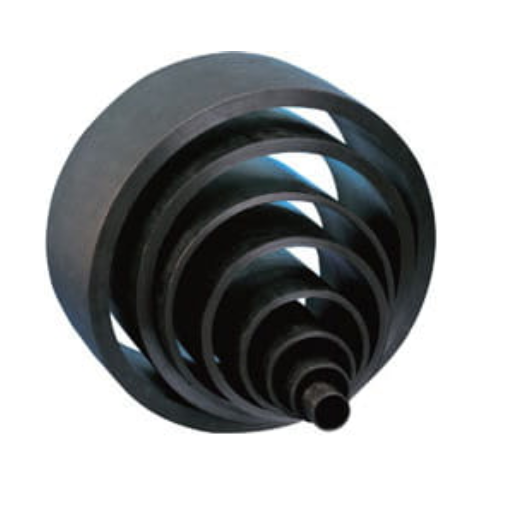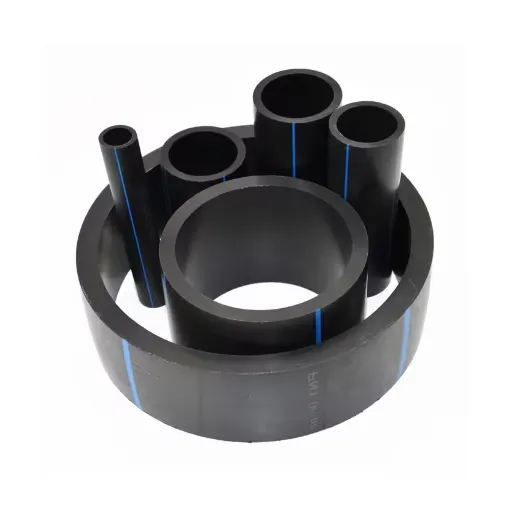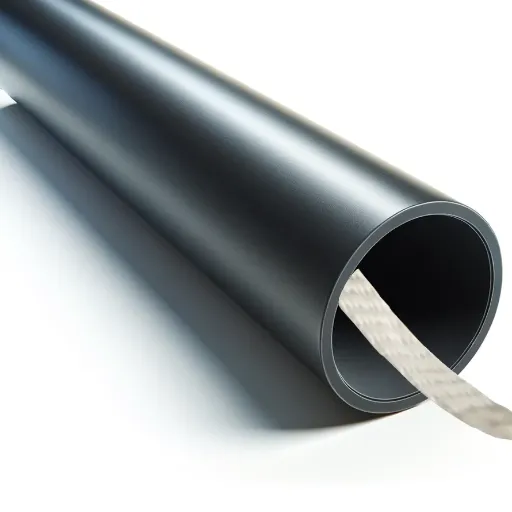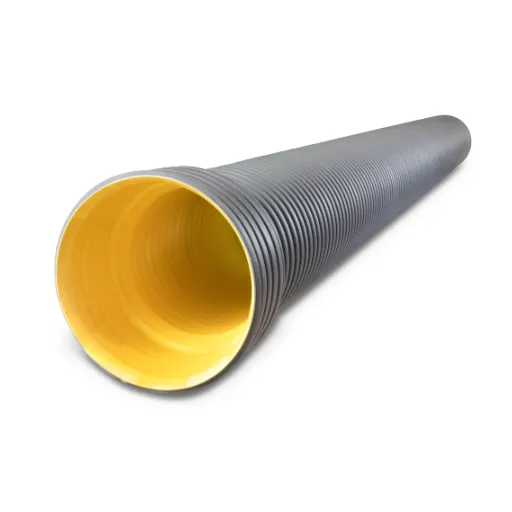High-density polyethylene (HDPE) pipes are at the forefront of modern piping solutions, offering durability, flexibility, and high performance for a variety of applications. When it comes to 6-inch HDPE pipes specifically, understanding their dimensions and specifications is crucial for proper implementation in projects ranging from municipal water systems to industrial pipelines. This guide will provide a comprehensive examination of the size chart, dimensional tolerances, pressure ratings, and application-specific considerations for 6-inch HDPE pipes. Whether you’re a contractor, engineer, or industry professional, this article will arm you with the detailed knowledge needed to make informed decisions and optimize your infrastructure projects.
What are the standard dimensions for 6-inch HDPE pipe?
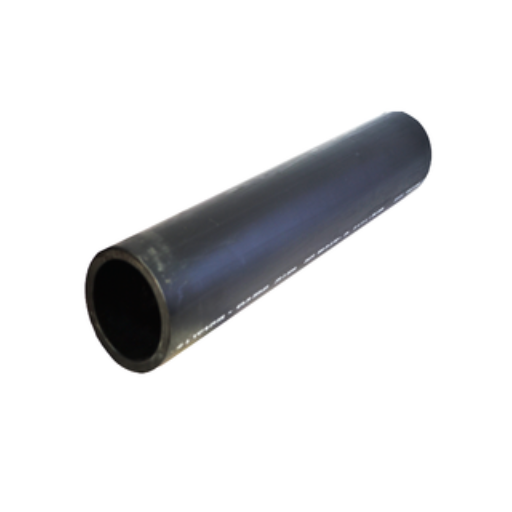
Understanding 6″ HDPE pipe OD and ID specifications
The outer and inner diameters (OD and ID) χαρακτηρίζουν the different specifications of the 6-inch HDPE (High-Density Polyethylene) pipe. A 6-inch HDPE pipe is normally used with an OD of 6.625 inches, which is equivalent to 168.28 mm. The actual ID often depends on the wall thickness, which is controlled by the pipes Standard Dimension Ratio or SDR.
SDR gives critical information about the diameter ratio of the pipe to its wall and determines the pressure and strength of the pipe. A pipe with an SDR value of 11 would have lesser ID and thicker walls compared to a pipe with an SDR value of 17. This flexibility guarantees that the pipe will be of use in many scenarios, such as portable water delivery or sewage systems that require different pressure and speed values. Calculating the ID is as easy as subtracting twice the wall thickness from the OD.
A pipe with a smaller ID can withstand higher internal pressures but limits the flow, while a larger ID enhances flow but can decrease the pipe’s peak pressure rating.
Wall thickness variations in 6″ HDPE pipe by SDR rating
As the Standard Dimension Ratio (SDR) of a pipe increases, the wall thickness of the pipe increases as well. An example of this is a 6-inch HDPE (High-Density Polyethylene) pipe; its wall thickness increases as its SDR increases. SDR is a measure for the dimensions of a pipe, it’s defined as the ratio of the pipe’s outer diameter (OD) to its wall thickness (WT). Higher SDR means more flow efficiency and lower pressure capacity. This allows the pipe to have thinner walls. Lower SDR means thicker walls, which enable the pipe to withstand internal pressure.
An example of this would be a 6-inch HDPE pipe with an SDR of 11. This specific SDR is typically rated at 0.545 inches of wall thickness. This measurement is ideal for systems where there’s a need for higher pressure resistance. In contrast, a 6-inch HDPE pipe with an SDR of 17 has around 0.353 inches of wall thickness. This pipe is ideal for medium-pressure systems or situations where cost efficiency and high flow are preferred.
These standards specify the exact wall thicknesses and pressure ratings for each SDR category relevant to meeting project requirements. Having an understanding of the SDR in conjunction with wall thickness enables informed decision-making from a safety and performance perspective regarding a multitude of applications.
HDPE pipe size chart reference for 6-inch nominal diameter
While considering HDPE pipes for an application with a nominal diameter of 6 inches (DN160), it is very important to look at the specific measurements of the outer diameter (OD), wall thickness, and associated pressure ratings. As for a 6-inch HDPE pipe, the accepted standard outer diameter is usually 168.3 mm, which is approximately 6.63 inches. The wall thickness of the pipe is based on the Standard Dimension Ratio (SDR), meaning it does change, which affects the pressure rating and strength of the pipe, requiring data accuracy to meet both design and operational standards.
The SDR classification correlates directly with the pressure rating of the pipe. For example, at SDR 11, the wall thickness of the pipe is about 15.3 mm (0.6 inches), resulting in high pressure ratings that are commonly exercised in gas systems, potable water systems, or even industrial ones. On the other hand, for some moderate to low-pressure applications where cost saving is necessary, SDR 17 pipes are beneficial, having thinner wall thickness of around 9.9 mm (0.39 inches).
Moreover, the criteria of the material grade, usually PE4710 or PE100 for newer HDPE pipes, along with thermal and climatic elements, such as temperature and external load, stand as crucial design considerations. These factors can intricately influence a pipe’s performance when there is a need for sustained durability and endurance to mechanical forces. Selecting the alignment information of the HDPE pipe with the appropriate flow volume, pressure limits, and expected service life ensures that the pipe performs with maximum efficiency and system safety.
How do pressure ratings affect 6-inch HDPE pipe dimensions?
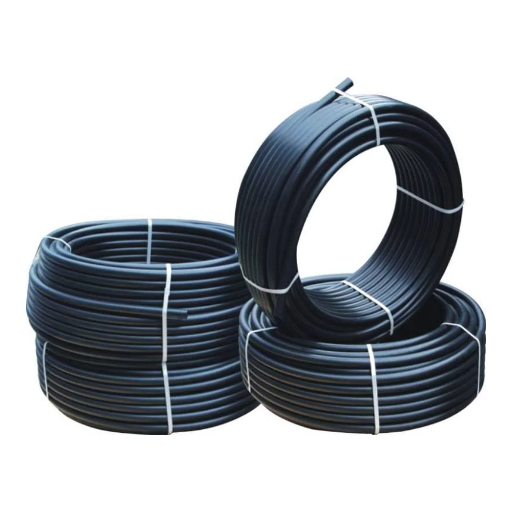
SDR11 6-inch HDPE pipe pressure specifications
SDR11 is short for Standard Dimension Ratio, and it is one of the calculations that takes into account the pipe’s outside diameter outside diameter and its wall thickness. An example of this is the 6-inch HDPE pipe, which has an SDR of 11, meaning that the pipe has high pressure-bearing capabilities because of its comparatively thicker walls.
For the SDR11 6-inch HDPE pipe, the pressure rating is generally close to 200 psi (pounds per square inch) at 73°F (23°C). It is very important to note that this rating may change due to factors like temperature, fluid type, and operational time. With the temperature rise, the pressure rating is decreased, owing to the decreased strength of polyethylene because of thermal expansion.
SDR11 pipes have been chosen by professionals for use in portable water distribution systems, municipal use, and industrial fluid transport due to their relatively low pressure capacity in comparison to cost, making them a great value. In addition, these pipes are non-corrosive, making them useful in demanding conditions because of their durability. More advanced safety measures for pipe joining and installation further enhance the reliability of the pipes under different conditions, making operational dependability more favorable.
Relationship between wall thickness and pressure rating
Basic mechanics and material properties govern the relation between wall thickness and pressure rating for piping systems. Generally, a thicker-walled pipe has a higher pressure rating because it can sustain additional internal force without internal failure or collapse.
Consider plastic pipes like PVC and HDPE: their walls are relatively thicker due to their inferior tensile strength. Conversely, steel pipes exhibit higher pressure tolerance with comparatively thinner walls. Operating temperatures of the system must also be considered since materials may become more brittle or weaker at non-standard temperatures. A good example is steel pipes; when operating at elevated temperatures, increasing the wall thickness becomes necessary to maintain structural integrity.
That low-pressure systems use thinner-walled pipes to cut costs, while high-pressure environments like oil refineries and chemical processing plants use thick-walled pipes. For instance, Schedule 80 steel pipes have a higher pressure rating than Schedule 40 pipes of the same diameter because they are thicker, so they are appropriate for high-demand situations. It is important to conduct proper analyses and design considerations to ensure the safety and reliability of piping systems for different operational requirements.
PE4710 material influence on 6″ pipe pressure capacity
PE4710 is a high-density (HDPE) polyethylene resin with better efficiency for use in piping systems due to its strength, durability, and chemical resistance. At a material level, PE4710 is favorable over predecessor generations of HDPE for 6” pipes since it all but increases pressure capacity due to its higher hydrostatic design basis (HDB). Its minimum required strength (MRS) rating of 10.0 MPa at 73°F allows for a thinner wall design without sacrificing performance.
The pressure rating of a pipe depends on the SDR. For a 6” pipe made from PE4710, SDR 11 is known to be able to support operating pressures of 200 psi, making it one of the strongest claimed so far PE4710 pipes in normal conditions. Pipes made from suppler HDPE materials tend to be more favorable as they result in a lower risk of failure, even in demanding industrial or municipal setups. Additionally, aggressive SCG and RCP resistance enhance the long-term reliability of PE4710, allowing for decades of service life.
Features like oxidative resistance, as well as high tolerance under dynamic loading conditions, further reinforce PE4710’s position as an industry standard for high-pressure systems. Its use in PE applications shows that it continues to fulfill engineering challenges with lifecycle cost efficiency.
What are the available length options for 6-inch HDPE pipe?
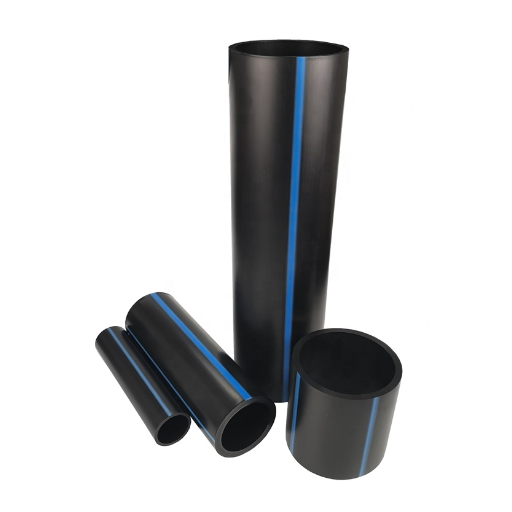
Standard shipping lengths for 6″ HDPE pipe products
For 6 inch HDPE pipes, the two most common shipping options available to meet most project needs are:
- Straight Length Pipes: These pipes are available in two common lengths: 40 feet and 50 feet. These pipes were designed for easy access and precise installation in alignment with other components of an engineering work and are optimized to reduce field joints requiring field welding to increase efficiency and meet tight specification volumetric requirements.
- Coiled Pipes: Depending on the SDR (standard dimension ratio) and the wall thickness of the pipe, 6-inch HDPE pipes can also be supplied in a coiled format, up to or greater than 500 feet. Coiled pipes have fewer joints and potential leak points, improving overall installation efficiency, especially for trenchless and other difficult terrain applications.
All options are equally advantageous for installation and, hence, can be used for a large number of projects provided they comply with the predetermined criteria about ease of maneuvering, installation, and connection of multiple segments.
Custom length availability for large HDPE pipe installations
The adaptability and convenience of high-density polyethylene (HDPE) pipes facilitate their use in different infrastructure projects: civil, industrial, municipal, etc. The availability of custom lengths provides a critical advantage, allowing engineers to reduce the number of joints required during installation. This feature, in addition to reducing leakage risk, improves the pipeline system’s structural integrity.
For large-diameter HDPE pipes, manufacturers can produce continuous lengths that extend beyond 1000 meters, depending on the pipe diameter and other application requirements. These lengths are beneficial for industrial and municipal water supplies, irrigation networks, sewage, and other infrastructure projects. Custom lengths are also useful in trenchless installation techniques, such as horizontal directional drilling (HDD) or pipe bursting, where minimal breaks in the pipe improve efficiency.
Custom-length HDPE pipes are typically produced with specialized extrusion processes. Their tailored project needs may require bespoke wall thicknesses, pressure ratings, material grades, and more. Such flexibility of custom-length pipes emphasizes the need for pre-design discussions with manufacturers to ensure operational and environment specifics are met.
What applications are suitable for 6-inch HDPE pipe?
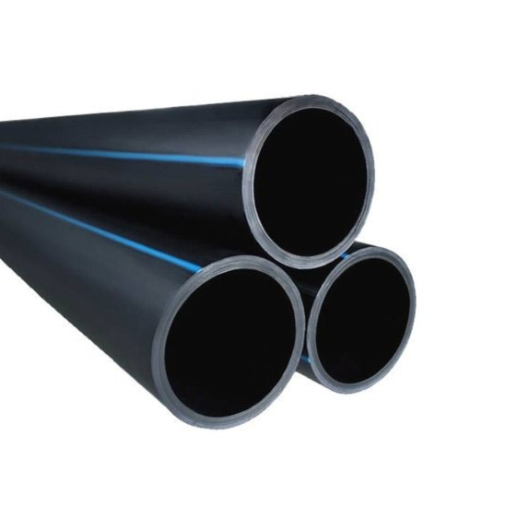
Potable water applications and dimensional requirements
6-inch HDPE pipes are ideal for potable water systems because of their excellent strength, resistance to corrosion, and compliance with safe drinking water regulations. These pipes are highly chemically inert and do not leach harmful substances, guaranteeing water quality. Their flexibility in construction and low weight also lead to easier installation in numerous terrains, decreasing labor and transportation costs.
Looking at the dimensions, pipes of 6 inches of HDPE (High Density Polyethylene) are readily manufactured with outer diameters of 168.3 mm and can be made with different pressure ratings like SDR 11, SDR 17, or SDR 21, depending on the application. Each SDR rating has a different internal diameter and wall thickness, which affects the pipe’s volume and pressure capacity. For instance, an SDR 11-rated 6-inch pipe is appropriate for higher pressure requirements compared to an SDR 17-rated pipe. Thus, SDR 11 pipes are used in high-demand and long-distance potable water transmission systems.
Meeting the integrity criteria of NSF/ANSI 61 and ASTM specifications makes the pipes suitable for both municipal and private water distribution networks because they are engineered to guarantee safety and performance requirements. Proper prior installation design that accurately considers flow rates, operating temperature, and pressure for 6-inch HDPE pipes is critical to unlocking greater value in potable water application with these pipes.
Industrial use specifications for 6″ polyethylene pipe
For industrial use, 6-inch high-density polyethylene, or HDPE pipes, showcase magnificent versatility and strength. The pipes are built to take on high pressures with their typical pressure rating from 100 to 200 PSI depending on wall thickness and material grade, which can either be PE4710 or PE100. They are also designed to take extremely low and high temps at -40°F to 140°F as well as enduring fluctuating pressures, making them reliable in the most demanding operational conditions.
HDPE pipes’ structural integrity makes them chemically inactive, making it free of corrosion, scaling, and chemical reactions. This makes the pipes perfect for transporting industrial fluids, slurries, and even gases. Completing the list of characteristics is their remarkable resistance to abrasion and UV exposure, adding to their durability while also ensuring proper maintenance of over 50 years of service life.
One of the core criteria is the pipe’s dimensional stability, which follows standards. The listed strength and operational efficiency of the pipe follows from the SDR or standard dimension ratio alongside the nominal outside diameter of the pipe, which, for a 6-inch pipe under ASTM D30,35 is 6.625 inches. Between each material cost, there are common SDR options, such as SDR 11 and SDR 17, which allow a middle ground between pressure resistance and material price.
Furthermore, the low weight of HDPE pipe makes its transport and installation significantly easier than that of steel or ductile iron. This also eases the costs of labor and equipment, making the project schedule and budget more efficient. For environmentally friendly, sustainable industrial systems, HDPE carries the advantage of being recyclable while also having a low probability of leaking due to the fusion-welded jointing method that forms a monolithic and leak-proof piping system.
These characteristics make 6-inch HDPE pipes a suitable and economical option for such a wide range of industrial use, for example, from chemical processing plants to mining operations. Their importance across industries is underscored by their adaptability to various conditions.
High-pressure application considerations for 6″ HDPE
While employing 6-inch HDPE pipes in highly pressurized situations, proper engineering approaches must be utilized to ensure structural integrity and optimum pipe performance. One equation focus is the piper’s pressure rating, which can be located within the inherent strength of the material and the thickness of the pipe walls. This is the reason why HDPE pipes are manufactured to comply with standards. These pipes are generally categorized norminally by pressure ratings in terms of PSI or bar and often boast a range anywhere between 50 PSI to 335 PSI depending on the application and the pipe grade.
One other consideration that needs to be factored in is temperature shifts. The ever-changing temperatures can reduce the capability of bearing down pressure. And for every 10° F you go above 73.4° F or 23° C, some pressure ratio points need to be dropped. In addition, the effects of surge pressure brought about by violent changes in the flow velocity are important, too. Sure, the flexibility of HDPE can help shrug off a bit of buoyancy that comes with sudden changes in flow, but that also means a bit of hydraulic shock has to be engineered for.
Another critical aspect of this is the joint integrity. Both butt and electro-fusion welding procedures complete joints that are leak proof under high internal pressures. In addition, the pipe’s environmental stress cracking and corrosion resistance further increase its applicability in hydraulically demanding tasks such as high-pressure water distribution or mining slurry transport. Additionally, adherence to specific safety and operational guidelines about the respective industry facilitates sustained reliability and functionality under extreme pressure conditions.
How do industry standards regulate 6-inch HDPE pipe dimensions?
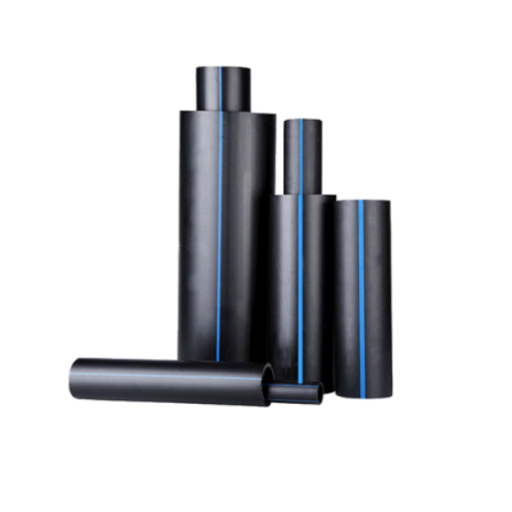
ASTM dimensional specifications for 6″ HDPE pipe
The ASTM International standards regarding the 6-inch HDPE (High-Density Polyethylene) pipes concentrate on the dimensions, pressure rating, and performance tolerances to maintain reliability and uniformity in all industrial use. The primary specification that governs polyethylene (PE) plastic pipes is F714 – it points to the chilling PE plastic pipes with the outside diameter (OD). As per this standard, a 6-inch nominal pipe size would generally have an OD of 6.625 inches (168.28mm) for the diameter.
These pipes are grouped into different standard dimension ratios (SDRs), which show the ratio of the diameter of the pipe to its wall thickness. For instance, a 6-inch HDPE pipe with SDR 11 has a wall thickness of 115 gP/c 0.602 inches200 mayor) 15.3 mm) with a high-pressure capacity of up to 160 psi (pounds per square inch). If the pipe has SDR 17, the wall thickness to nominal diameter ratio would be set to 0.389 inches (9.88mm) with a lower pressure rating of nominal 100 psi.
Moreover, ASTM D3350 sets the standards for the quality of resin used in HDPE pipes, including density, melt index, and slow crack growth resistance. These factors, as well as others, strengthen the structural integrity of HDPE pipes, enabling their reliable use across numerous applications, including irrigation, municipal water infrastructure systems, and industrial fluid transport.
Minimum wall thickness requirements by application
The minimum wall thickness of HDPE pipes is determined by the individual application and operational requirements like internal pressure, external loads, and other environmental considerations.
- Municipal Water Distribution: HDPE pipes used for potable water distribution systems usually adhere to a minimum Standard Dimension Ratio (SDR) of 17 or higher based on the working pressure of the network. Pipes with SDR of 17 are meant for operating pressures up to 125 psi, which is often the case in municipal water systems. Other specific performance considerations may require thicker walls, such as SDR 11 pipes, which have higher pressures.
- Irrigation Systems: HDPE pipes used for irrigation applications are often equipped with wall thicknesses that correspond to an SDR of 21 or greater for low-pressure systems. However, pump-fed networks may require an SDR of 13.5 or even 11 to endure operational pressure exceeding 150 psi.
- Industrial Fluid Transport: All industrial pipelines necessitate higher pressures along with potentially corrosive contents requiring increased wall thicknesses. For these applications, pipes with SDR of 9 or 7.4 are commonly used as these support pressures of more than 200 psi. Special grade consideration for chemical resistance and temperature changes may further impact wall thickness choice.
- Buried Sewer and Stormwater Systems: These sewer and stormwater systems are gravity-fed and make use of an HDPE pipe. This HDPE pipe needs to be durable enough to withstand soil loads and other forces acting externally. These systems usually have minimum wall thicknesses based on structural criteria set by AASHTO M294, which also includes designs for corrugated pipes. Although there is no focus on internal pressure for these systems, walls must maintain rigidity to control deflection and ensure that flow within the system is minimized.
This makes certain that the expectations placed on these HDPE pipes in terms of construction and functionality are sustained while placing them under a wide variety of conditions to enhance service life and reliability.
References
Frequently Asked Questions (FAQs)
Q: What are the standard dimensions of 6-inch HDPE pipe?
A: 6-inch HDPE pipe typically has an outside diameter of 6.625 inches for the IPS (Iron Pipe Size) sizing system. The inside diameter will vary depending on the DR (Dimension Ratio) or pressure rating of the pipe. For example, a DR 17 pipe will have a thicker wall and smaller inside diameter than a DR 21 pipe. The wall thickness typically ranges from 0.315 inches to 0.602 inches, depending on pressure rating requirements.
Q: What is the difference between IPS and DIPS sizing for 6-inch HDPE pipes?
A: IPS (Iron Pipe Size) and DIPS (Ductile Iron Pipe Size) are two different sizing standards used for 6-inch HDPE pipes. IPS 6-inch HDPE pipe has an outside diameter of 6.625 inches, while DIPS 6-inch HDPE pipe has a larger outside diameter of 7.125 inches. DIPS sizing is often used in water distribution applications, while IPS is more common in industrial and gas applications. The inside diameter will vary for both based on the wall thickness or DR rating of the pipe.
Q: How much does a 6-inch HDPE pipe weigh per foot?
A: The weight of a 6-inch HDPE pipe varies based on its wall thickness or DR (Dimension Ratio) rating. On average, a 6-inch IPS HDPE pipe (DR 17) weighs approximately 4.4 pounds per foot, while a heavier-duty DR 11 pipe of the same diameter might weigh around 6.3 pounds per foot. For DIPS sizing, the weights will be slightly higher due to the larger outside diameter. These weights are important considerations for transportation, handling, and installation planning.
Q: What is the inside diameter of a standard 6-inch HDPE pipe?
A: The inside diameter of a standard 6-inch HDPE pipe depends on the pipe’s wall thickness, which is determined by its pressure rating or DR (Dimension Ratio). For an IPS 6-inch HDPE pipe with a 6.625-inch outside diameter, the inside diameter typically ranges from approximately 5.42 inches (for DR 11) to 5.93 inches (for DR 21). This variation occurs because higher pressure pipes require thicker walls, which reduces the inside diameter. When planning flow capacity, it’s essential to use the actual inside diameter rather than the nominal pipe size for accurate calculations.
Q: What pressure ratings are available for 6-inch HDPE pipes?
A: 6-inch HDPE pipes are available in a range of pressure ratings determined by their DR (Dimension Ratio) values. Common pressure ratings include 63 psi (DR 26), 80 psi (DR 21), 100 psi (DR 17), 125 psi (DR 13.5), and 160 psi (DR 11) for PE4710 material at 73.4°F (23°C). Higher temperatures reduce these pressure ratings.
Q: How does the SDR rating affect the flow capacity of 6-inch HDPE pipe?
A: The SDR (Standard Dimension Ratio) rating directly affects the flow capacity of 6-inch HDPE pipe because it determines the inside diameter. A pipe with a higher SDR number (thinner wall) has a larger inside diameter and, therefore, greater flow capacity than a pipe with a lower SDR number (thicker wall) of the same nominal size. For example, a 6-inch HDPE pipe with SDR 17 will have approximately 19% more flow capacity than the same pipe with SDR 11. This difference is significant when designing systems with specific flow requirements, as the actual inside diameter, not the nominal size, determines flow capacity.



